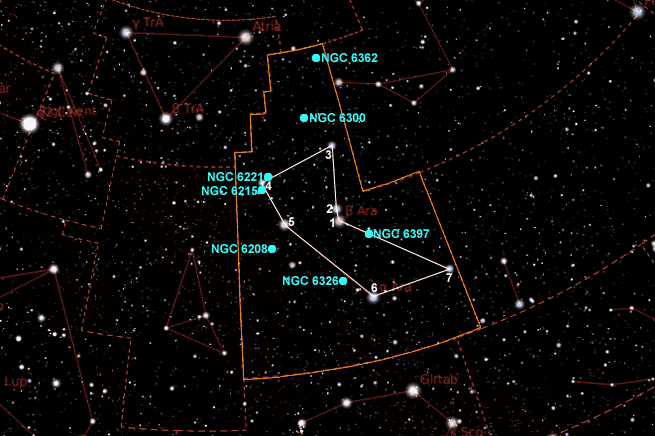Source video: BerkeleySETI
The radio telescope located in South Africa has captured a mysterious radio signal in the constellation of the Altar, which could indicate the existence of a star system in our galaxy. The team of scientists who were analyzing part of the southern sky, near the constellation of Ara or Altar, detected a radio emission of an object of a factor of three for about three weeks. Scientists describe this scheme as an “unusual glow” from a binary star system, that is, two stars that orbit around each other and that are found in our galaxy, the Milky Way. The new MeerKAT radio telescope, inaugurated last year, is located in the Karoo desert in South Africa and was used for its detection. The phenomenon recorded is a “transitory source”, ie a non-constant source.
 |
| Altar costellation |
The signal was called MKT J170456.2-482100 and could only be the beginning of a series of “messages” coming from the other star system, since it was found only in the first field observed with the telescope. After using the data obtained from other optical telescopes that detect visible light instead of radio waves, they were able to obtain other observations of the star. It is a giant star with a mass about 2 and a half times the mass of the Sun. Data collected for 18 years by telescopes have been observed, discovering that the brightness of the star changes over a period of 21 days. Furthermore, the star has a magnetic field and orbits around its partner every 21 days. Radio signals could be explained by the magnetic activity of the giant star; however, there are no signs in the spectrum that the binary partner for now not visible is actually a Sun-like star. It should be noted here that it is not known what kind of star is the partner of the giant star and whether it has a planetary systena from which radio signals would start. Ben Stappers, principal investigator of MeerTRAP, one of the teams working on the project, said the discovery could “represent a completely new source class”. Stappers added that it could be an exotic star system never seen before and involving a giant star in orbit around a neutron star, (the dense residue of a supernova star explosion) or a black hole. For now, nothing is certain about the radio signal received from this star system.
No comments:
Post a Comment
Note: Only a member of this blog may post a comment.